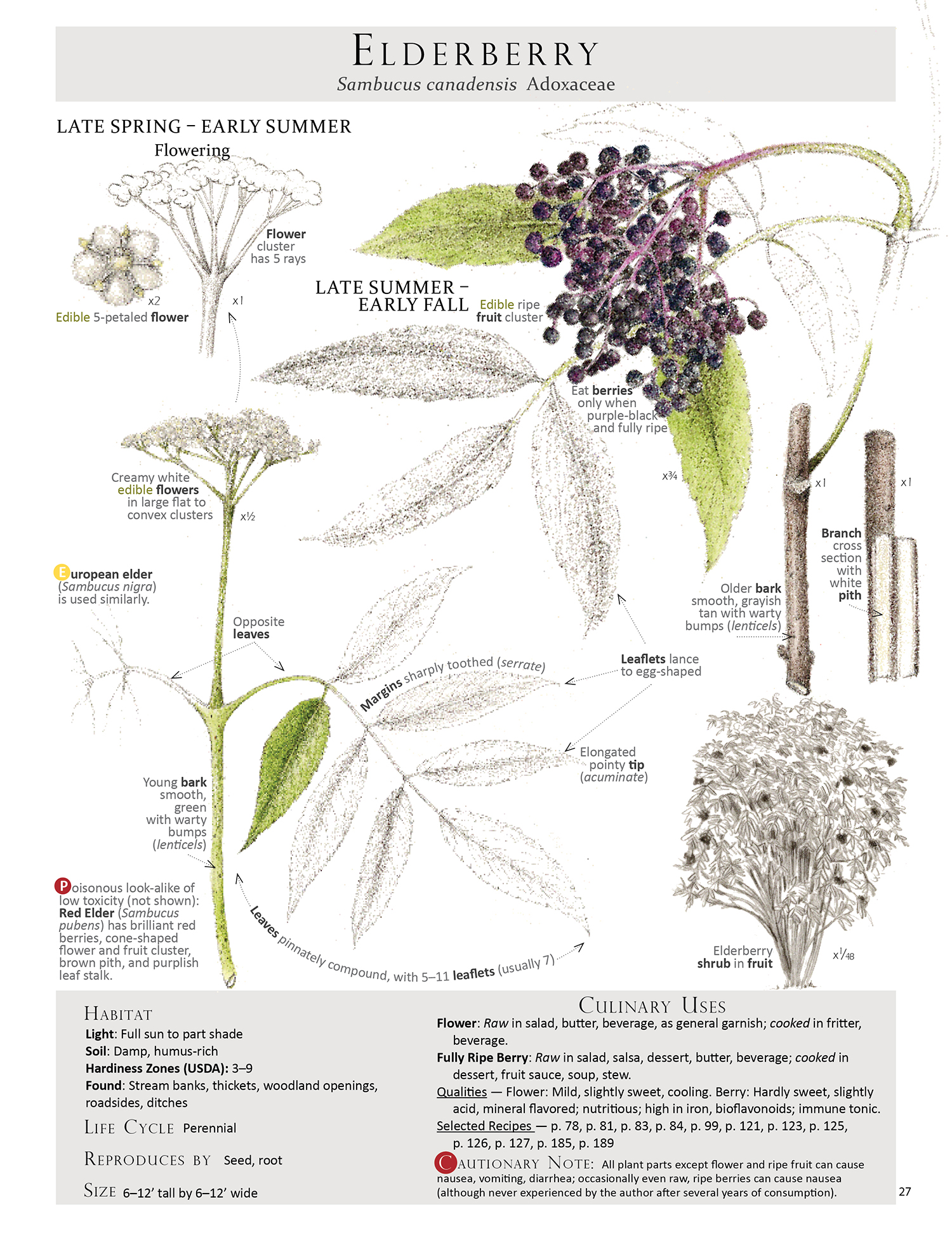Hello #Elderberry! Just spotted my first ripe elderberry aka Sambucus canadensis. The berries of this Eastern North American native shrub will continue to ripen into late September. Harvest them only when they are purple-black and fully ripe. These nutritious berries — high in iron and bioflavonoids — are an immune tonic. Turn these hardly sweet, slightly acid and mineral flavored berries into tasty elderberry syrup; delectable elderberry catsup; refreshing elderberry agua fresca; fermented elderberry kefir soda; alcoholic elderberry liqueur; or toss some into salad: both green salad and fruit salad. Cautionary note: All plant parts except fully ripe berries and flowers (earlier in the season) can cause nausea, vomiting and diarrhea; occasionally even ripe, raw berries can cause nausea (although I've never had this experience after several years of consumption.)
Wild Berry Picking
More #WildBerry picking: #blackberries w/ a few #raspberries. Gathered about 3 gallons this morning. The blackberries are very tasty and super abundant this year! Turning most of the berries into coulis and then freezing the coulis to use throughout the year. Today's featured blackberry recipe here at the house will be ice cream made w/ fresh raw grassfed cream.
Wild Bergamot in Bloom
#WildBergamot blooming beautifully= food for the #Pollinators and for us. Right now it's time to indulge in those lovely, light lavender #EdibleFlowers full of spicy sweetness. Sprinkle them onto salads; blend them into softened butter; use them as a flavorful garnish throughout. This wild American native, aka #Mondarda fistulosa, is a perennial of the Lamiaceae family. Look for it in meadows, clearings, prairies, thickets and gardens. Harvest the flowering tops to brew into a strong flavorful tea with a spicy, pungent, oregano-like flavor; has cleansing and digestive promoting qualities.
Wild Bergamot Plant Identification page from the book Foraging & Feasting
Day Lily Harvest
#DayLily's beautiful blossoms can be eaten now! Raw or lightly cooked, they offer a mild flavor with a mucilaginous effect. I love to tear the flower into smaller pieces and add it to salad or to garnish w/ it. The the long flowers buds and wilted flowers can also be eaten lightly cooked. Originally from Asia, and now widely spread throughout the landscape, this perennial's Latin name is Hemerocallis fulva of the Xanthorrhoeaceae family. BTW, occasionally may cause vomitting or diarrhea if eaten in large quantities by sensitive individuals.
The Day Lily Plant Identification Page from the book Foraging & Feasting
Red Clover
#RED CLOVER (Trifolium pratense) graces the landscape — time to gather the blossoms for food and medicine = medicinal food. Break up the flower heads and sprinkle the individual blossoms into salads, onto cakes, and as a garnish to beautify any dish. Dry the blossoms for a health-promoting tea; often used for supporting skin and lung health. Flavor is mild with a sweet pea-like taste.
Violet
Looking forward to righteous #violet (Viola sororia) arriving back in the landscape. Eat the mild leaves & flowers raw; super high in #vitaminC — flower surprisingly more than leaf. Decorate dishes, even cakes with the blossoms. Toss leaves into soup at the end of the cooking process, blend into pesto with more pungent greens or in Wild Green Goddess Dressing. Violet's soothing, cooling qualities help with inflammation in the gut and respiratory systems, as well as topically on the skin. Some say that these wild, free, and abundant violets are #antineoplastic, read anticancer!!!









